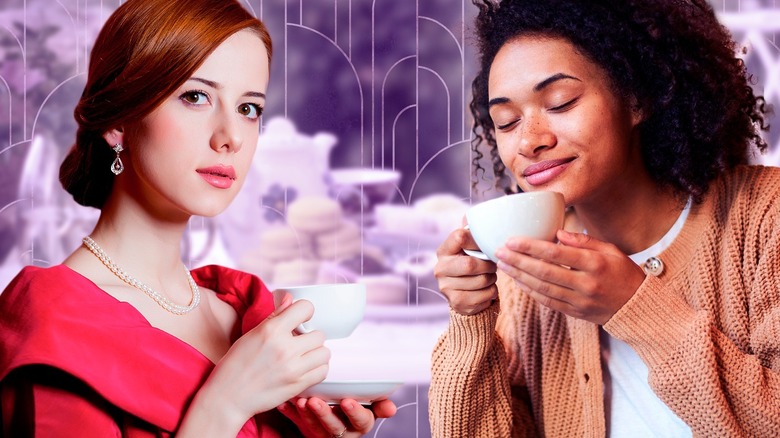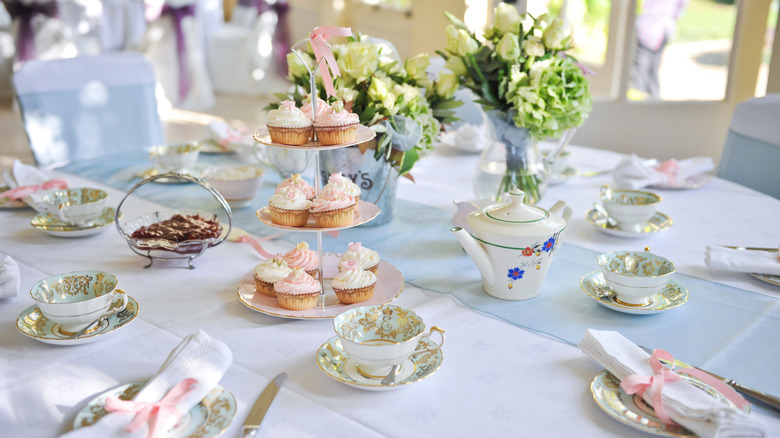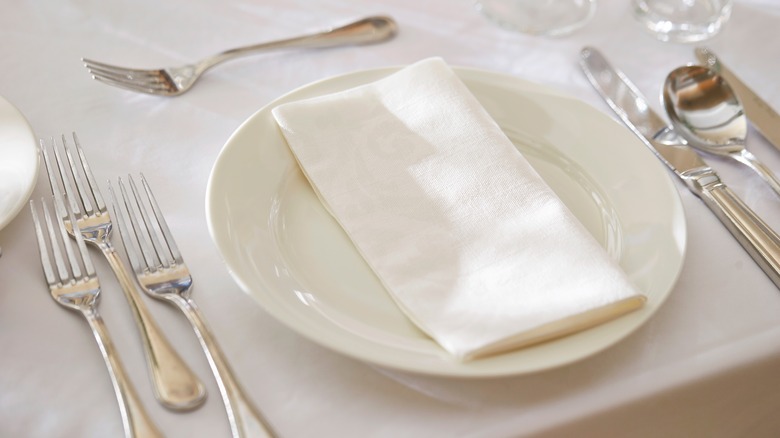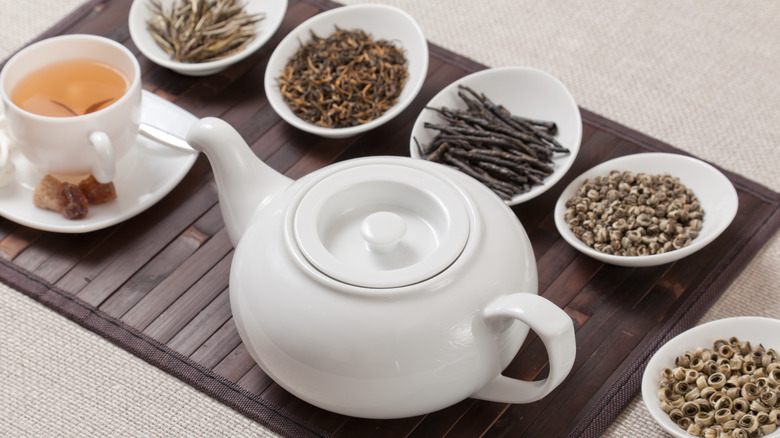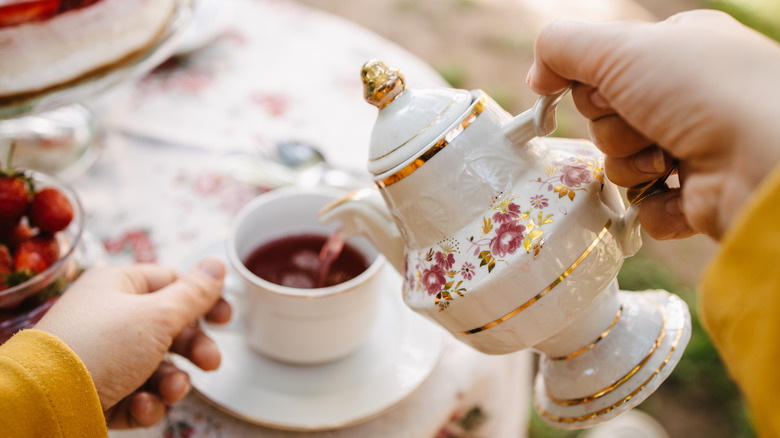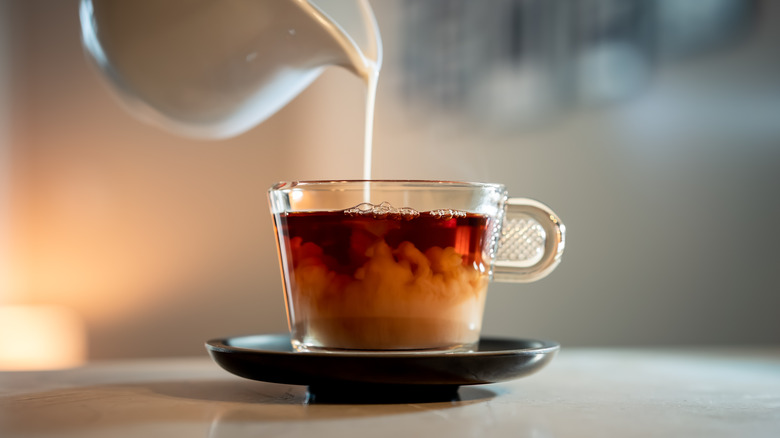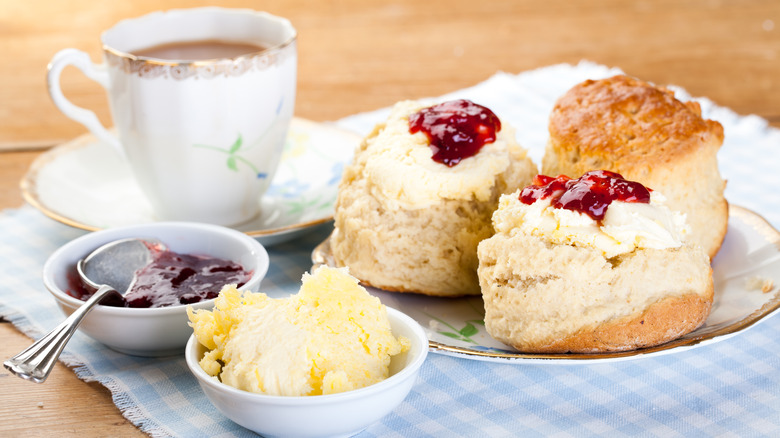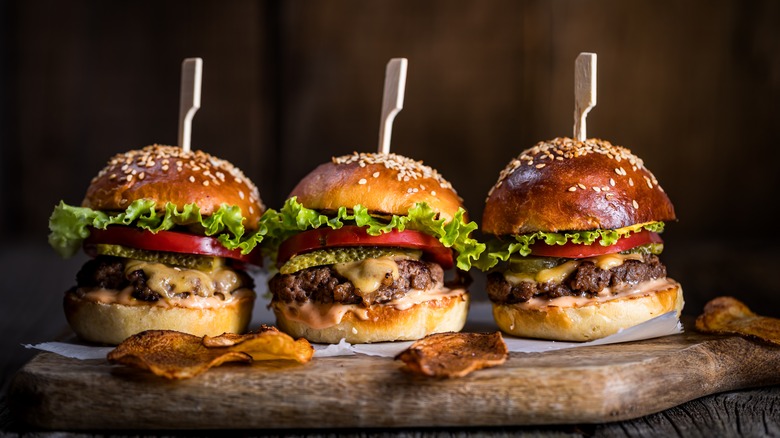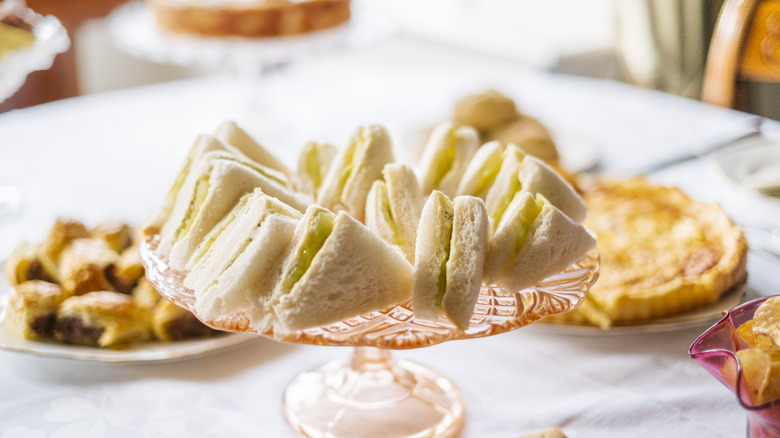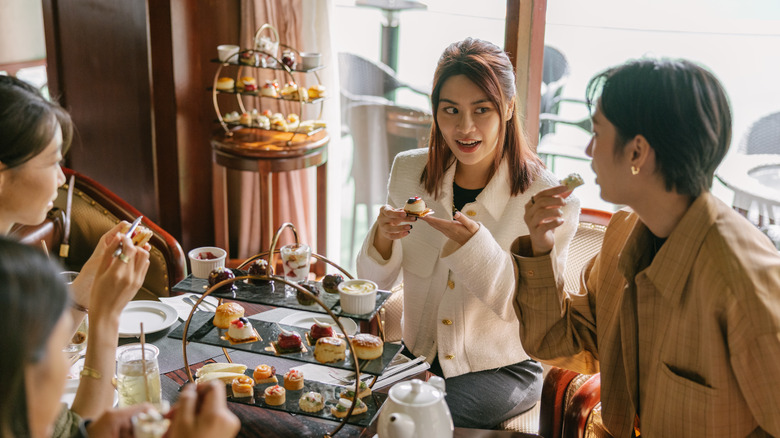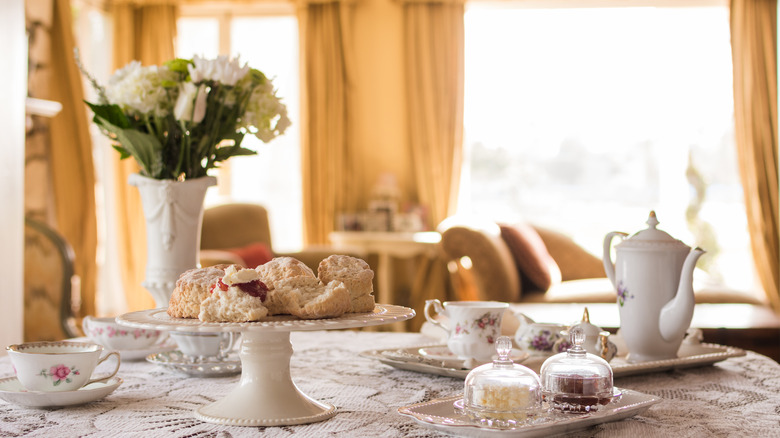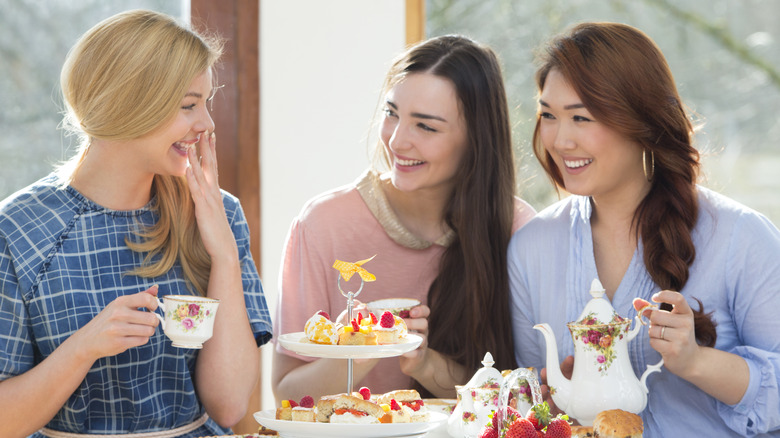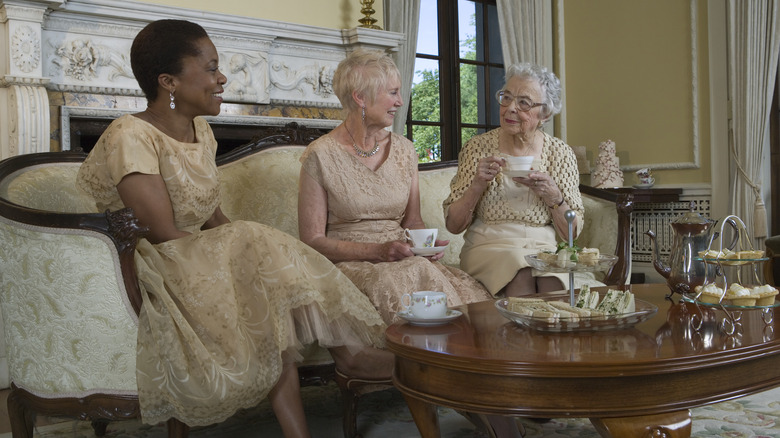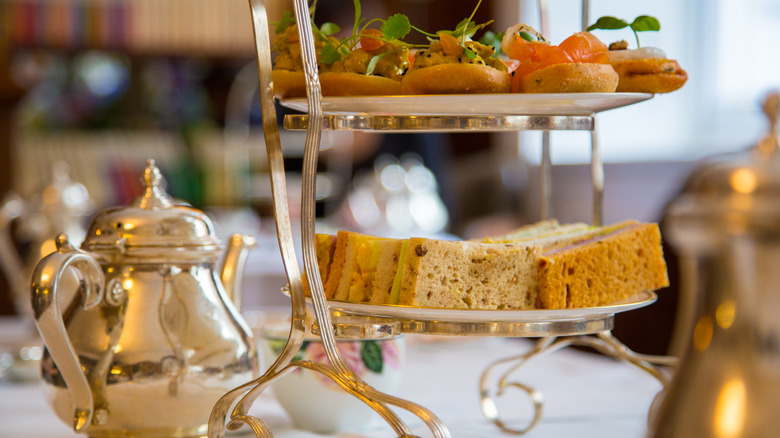12 Etiquette Rules To Enjoy Afternoon Tea Like A Royal
Afternoon tea is a synonym of customs, etiquette, and royalty. This much-beloved meal time that falls between lunch and dinner is, in fact, a centuries-old tradition that dates back from the year 1840, when Anna Maria Russell, Duchess of Bedford, was visiting the Duke of Rutland at Belvoir Castle near Leicestershire.
Around the nineteenth century, dinner was served between 7:00 pm and 8:30 pm, which meant that many started feeling a mid-afternoon pang of hunger. Enter the Duchess, who turned her afternoon snack into a social event. Soon enough, afternoon tea became a trend, with many of the elements we know today: cucumber sandwiches, cold meats, and plenty of chatter.
And how about high tea? The tradition comes from the times of the Industrial Revolution when workers came home exhausted and hungry. This transformed tea time into a heartier meal, with meats, cheese, and bread served on the high table — hence the name high tea.
To guide us along the proper way to enjoy our tea, we enlisted two experts: Gary Williams and Karene A. Putney. Gary Williams is a Principal at the British Butler Institute and has worked at The Ritz London and the Brazilian Embassy in London. Karene A. Putney is the founder of Etiquette Etiquette, a business consulting firm in National Harbor, Maryland.
How to set a proper table for afternoon tea
First things first: let's set a stunning table. Start with a beautiful tablecloth that has been perfectly washed and ironed and napkins to match. "Since it's a smaller napkin, I wouldn't be making any swans or hats or anything," says Gary Williams, "it's a simple fold." The napkins should go on top of the cover plate. To its left, place a pastry fork facing up, and to its right, a pastry knife with the blade facing the plate.
According to Williams, it's okay to use cutlery, but if you have bone china, even better. Place a saucer, tea cup, and spoon above your cover plate. The tea cup's handle should be facing right, while the teaspoon should be placed across the top with its end facing the left side. If your guest is left-handed, switch these directions.
As for your tea set, write down this checklist: a pot of boiled water, a tea strainer with a base, a jug of milk, lemon slices, white sugar cubes, and tongs. Other important items to include on the table are butter and a butter knife. If you're serving scones, serve the clotted cream in a bowl with crushed ice, plus strawberry and raspberry jams with serving spoons. Lastly, remember to always keep extra plates, saucers, and cups in case one of your guests needs to replace theirs.
How to handle your napkin during tea time
When you arrive at afternoon tea, you will notice a cocktail napkin waiting for you on the table. "When you're seated, place your napkin on your lap," suggests Karene A. Putney. She also says the napkin should be used to delicately nab your lips or face when you've eaten and need to perhaps clean off a bit of clotted cream or a drop of tea that may have left a trace.
If you need to leave the table for a while but plan to come back — perhaps to go to the bathroom or to take a call — you should leave your napkin on the arm of the chair, says Gary Williams. If you're sitting in an armless chair, use the back of the chair instead. Once afternoon tea is over and you're ready to leave the restaurant, hotel, or home you've been invited to, you can leave the used napkin on the left side of your plate.
What is the best tea to serve?
Traditional English tea, also known as English Breakfast tea, is a blend of Ceylon, Kenyan, and Assam teas, and it's a perfect pick-me-up to drink in the afternoon. Another favorite is Earl Grey, a blend of oriental teas with bergamot, giving it a distinct citrine flavor. In a similar vein, Lady Grey also includes bergamot oil, as well as China teas, Seville orange, and lemon peel, resulting in an aromatic and softer blend. If you're looking for a more potent drink, pour a cup of pure Assam, a brightly colored, malty tea from North India that will provide an energy boost thanks to its high caffeine content.
For a refreshing option, lemon tea is a good idea. Resulting from the combination of lemon and China tea, it's perfect as a palate cleanser. Pure Lapsang Souchong also has this effect. This smoky tea hails from China's Fujian province and is made by drying large tea leaves over pine fires. If you want to impress your guests, pour with pure Ceylon, a bright, golden import from Sri Lanka, or pure Darjeeling, a delicate tea from the Himalayas that is graced with the nickname "the Champagne of teas."
How to brew and pour tea
The first important thing to consider for brewing tea is the quality of the water itself. Use fresh spring water to ensure delicious tea. Also, avoid using the microwave and heat the water on the stove instead, with the temperature ranging between 140 and 212 F. For brewing, the ideal tool is a teapot, but you can use a French press as a plan B.
The most important rule of brewing, notes Gary Williams, is to try to use loose-leaf tea instead of bags whenever it's possible. "We always make a strong brew," he says. You should consider "two heaped teaspoons of tea leaves: one per person, one extra spoon for the pot," he adds. Also, remember to always keep a pot of hot water on the table so that your guests can dilute as desired. And remember: when you're serving your guests, tea should be served from the right and cleared from the right as well.
When and how to add condiments
"Traditional tea service is served with white cubed sugar — brown sugar is for coffee," says Gary Williams, Principal at the British Butler Institute. He notes, however, that guests these days have different tastes, so it's normal to see brown sugar and other sweeteners as well as white sugar cubes. If you want to stick to tradition, offer white sugar cubes and use tongs to place them in the cup.
"Milk is served cold, and we use full-bodied milk," he adds, explaining that this tradition also comes from the Duchess of Bedford. Keep in mind that you should serve the tea first, add the sugar next, and pour the milk last. Not all teas go well with milk, though. Traditional afternoon, Earl Grey, Lady Grey, and pure Darjeeling pair nicely with dairy, while lemon tea should not be mixed with milk. On the other hand, traditional English goes nicely with a slice of lemon, while pure Ceylon is versatile and can be drunk with either milk or lemon.
What are the best foods to pair with tea?
Food is one of the most fun parts of afternoon tea; it allows us to learn about classic to innovative pairings. When it comes to the best combos to serve, start with Earl Grey. Gary Williams suggests paté and ham-based dishes, as well as crème brûlée for a sweet ending. With Earl Grey, Karen A. Putney, the founder of Etiquette Etiquette, also offers a sweet pairing: lemon tart. "The tea's citrusy notes complement the tangy sweetness of the tart," she says.
If you're pouring Ceylon, go for cucumber and tomato-based dishes, as well as lemon-based desserts. Williams notes that egg-and-cress sandwiches and cream cheese sandwiches go beautifully with Darjeeling, and Putney agrees. "The tea's delicate, floral notes are enhanced by savory finger sandwiches," she says. Speaking of salmon, it goes great with Lapsang Souchong, according to Williams, as do chicken-based dishes.
Per Putney, "The robust flavor of English Breakfast pairs well with plain or fruit scones, especially when served with clotted cream and jam." She suggests serving shortbread cookies with chamomile tea, as "the mild, floral flavor of chamomile pairs beautifully with buttery shortbread cookies, enhancing their rich, crumbly texture."
Love everything, matcha? "Green tea's grass notes complement the earthy sweetness of matcha-flavored desserts like cake or macarons," says Putney. She also offers a fun pairing idea: "Oolong tea's complexity and slight sweetness make it a versatile pairing for a variety of dim sum dishes, such as dumplings."
Foods to avoid with afternoon tea
When we think of afternoon tea, the first dishes that come to mind are crustless sandwiches and beautiful little cakes, and with good reason. Those dainty, iconic dishes are present at most tea tables. "Tradition calls for dishes like cucumber sandwiches, scones, and many kinds of little sandwiches," says Karene A. Putney. She gives a word of warning about greasier meals, however. "On fancier settings, you can serve salmon or cheese and crackers, but mostly, I'd say keep it light. Don't make it too heavy."
As tempting as it may be to serve delicious sliders or tiny tacos, these substantial dishes might be too filling for what is ultimately a mid-afternoon snack. Also, they can be too messy. A crumbling tostada in the middle of afternoon tea? Delicious, sure, but not very royal. "Definitely nothing messy or too greasy," states Putney. Mentioning mac and cheese and burgers as examples of foods to avoid, she recommends saving them for a more casual affair.
How to serve the food in order
If you want to go all in and serve a traditional afternoon tea, you need to know the correct order to serve each course. The first course consists of savory sandwiches, such as cucumber, egg with watercress, or tuna. Your sandwiches should be crustless, and you can cut them into triangles or fingers. Next come the scones and crumpets. You can serve these on a plate on the table with serving tongs or offer a piece to each guest. Keep in mind that you should serve scones whole, not cut in half. As for crumpets, you should serve them hot with butter.
Pastries, which can include shortbread cookies, lemon tarts, or berry pies, come third and should be plated on the table with tongs as well. Lastly, to bring the event to a sweet and refreshing finale, the fourth course is a beautiful bowl of strawberries with clotted cream. Present the strawberries in a serving dish with serving spoons so your guests can help themselves. The dessert is complemented with castor sugar, cinnamon, and black pepper, all of which should come with their own small serving spoons as well.
Two last pieces of advice: always remember to serve food from the left, says Gary Williams, and make sure that everybody at the table has finished eating the current course before bringing a new one.
What is proper conversation during afternoon tea?
When Anna Maria Russell began the tradition of afternoon tea, it quickly became a trendy social event of the era. To this day, tea time is still an excellent excuse to gather around the table to enjoy delicious snacks and drinks and, well, to spill the tea. Karene A. Putney agrees, although she says it's always best to keep the chatter clean and positive — as tempting as it may be to bring the juiciest topics to the table.
She recalls the early days of afternoon tea, from Queen Victoria to Queen Mary, as "a great time for ladies to get together. They would gather not for negative but for healthy gossip," she says with a laugh. Gary Williams notes that it's smart to steer clear of controversial or dense topics. "With tea, it's supposed to be light conversation," he says. "We're not here to talk about the next president or the church."
How to create the perfect atmosphere for afternoon tea
Now that you've got the stunning table set and the menu planned, there are a few details left. A major one is how to create a lovely atmosphere for afternoon tea. Sure, your home may not be called Downton Abbey, but there are a few tricks you can pull to ensure a perfect setting. "Back in 1840, maybe you would have had a harpist there," says Gary Williams, "but today something instrumental works perfectly." He suggests something subtle, such as piano music.
Karene A. Putney also suggests classical music or jazz, and she adds that fresh flowers always give a touch of beauty that livens up a room. Lastly, remember to tell your guests to arrive on time — nothing ruins the mood like guests being late while others wait uncomfortably. Williams notes that the ideal time for afternoon tea is between 3:30 PM and 6:00 PM, although two hours — from 3:30 to 5:30 — should be enough.
How to dress for afternoon tea
As a tradition that has evolved over time, afternoon tea may now allow for a slightly more casual look than it did during Anna Maria Russell's time, but that doesn't mean you can show up in athleisure or baggy jeans. Gary Williams, Principal at the British Butler Institute, describes the dress code for afternoon tea as semiformal. "For men, it's slacks, a shirt with a collar, and a jacket. No tie necessary," he says. "And for women, it's a nice dress. Cocktail attire."
Karene A. Putney of Etiquette Etiquette adds that it's always helpful to call the venue before you go — be it a hotel, a restaurant, or a friend's home — and ask about the dress code. "You want to look smart and professional," she says. "You don't want to show up with shorts, flip-flops, or sneakers," she notes. In fact, Putney shares that one of the reasons many clients attend Etiquette Etiquette's afternoon tea classes is because they love dressing up.
How to behave at afternoon tea
Manners are a big part of a proper afternoon tea. Karene A. Putney notes that it's important to maintain a good posture. "You want to sit in the middle of the chair," she says, versus leaning too much either toward the table or on the back. Of course, "no elbows or forearms on the table," she adds, and if you're enjoying tea on a high table, there's no need to pick up the saucer and bring it close to you. Just pick up your cup.
Gary Williams adds plenty of good advice for when you're eating, with the usual things to consider: don't take massive bites or eat too much at once, and certainly don't try and speak with food in your mouth. "You take a bite, rest, swallow, and then talk," he says.
Williams emphasizes the importance of considering the size of your food. "You should eat bite-sized pieces of scones," he tells us. "We're not eating hot dogs here!" Lastly, he adds that there is an important tip for applying butter to your food — it's not advisable to take it from the dish and apply it to your food. Instead, the proper afternoon tea etiquette is to take a pat of butter from the dish put it on your side (or tea) plate, and then place it on your scone, crumpet, or other pastry.
Where to find the best afternoon tea
If you're in search of one of the loveliest afternoon tea destinations, The Palm Court at The Plaza in New York is one of your best bets. With more than 115 years of tradition, this stunning space, inspired by Grand Central Station and adorned with abundant greenery and high stained glass ceilings, is perfect for an afternoon of class and enjoyment. You will find a selection of teas by Palais des Thés, as well as champagne and refined snacks.
In Washington, the Willard InterContinental Hotel serves exquisite teas by the J'enwey Tea Company paired with sandwiches, pastries, and scones. The historic spot is not only a feast for the eyes, but it's also where Karene A. Putney hosts Etiquette Etiquette's Afternoon Tea Classes.
Few places serve as iconic an afternoon tea as The Ritz London. Under the watchful eye of Giandomenico Scanu, a certified Tea Master, the hotel serves more than 20 types of loose-leaf tea and bubbly Champagne paired with all of your delicious afternoon fixings. The Ritz also offers a children's version featuring decaf tea and tiny treats for little ones.
